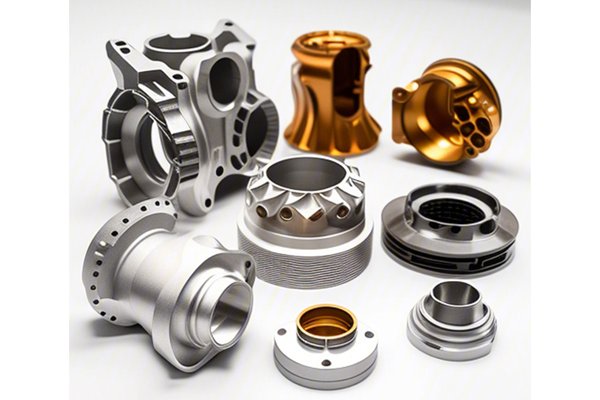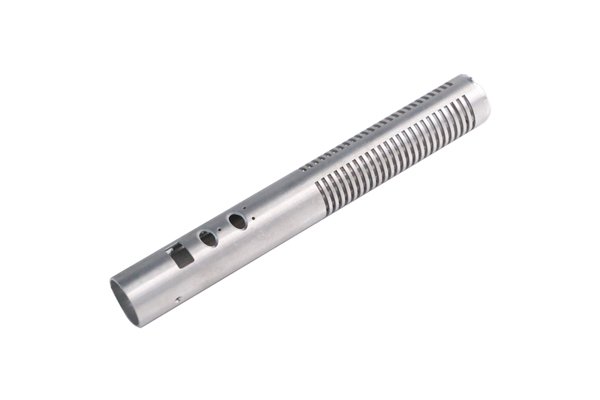When it comes to the aerospace industry, the demand for precision and quality is as high as the altitudes at which aircraft soar. Enter CNC turning, a game-changer in the manufacturing processes that ensure aircraft components are made to the exact specifications needed to maintain safety, performance, and efficiency. But what exactly are the key applications of CNC turning in this incredibly intricate field? Buckle up, as we take a deep dive into this fascinating topic!
Introduction to CNC Turning in Aerospace Manufacturing
CNC (Computer Numerical Control) turning involves the use of computerized systems to precisely remove material from a rotating workpiece. This process generates cylindrical parts, and when applied to aerospace manufacturing, it becomes essential for creating components with exact measurements and perfect finishes. Picture a sculptor wielding a chisel, but instead of a block of marble, they have a metal cylinder—every movement is calculated to create a masterpiece.
Why should we care about CNC turning in aviation? Well, imagine you’re in a plane that’s flying at 35,000 feet. The last thing you want is for a crucial component to be misaligned or poorly manufactured. The consequences could be disastrous! So, let’s explore how CNC turning is vital to not just keeping planes in the sky, but also ensuring they do so safely.
Engine Components
One of the most critical applications of CNC turning is in the production of engine components. Engines are the heart of any aircraft, and they require parts that can withstand extreme temperatures and pressures.
Key Parts Produced Through CNC Turning:
Imagine trying to walk on a tightrope; you need perfect balance. Similarly, the swashplate’s precise design allows for balance and safety in air travel.
Landing Gear Components
When an aircraft lands, all the forces of weight and momentum come crashing down. Therefore, the parts that make up its landing gear must be resilient, strong, and finely tuned.
Manufacturer Needs:
These elements may not be glamorous, but without them, you’d be seeing a dramatically different type of movie when you watched those thrilling aviation blockbusters!
Connectors and Fittings
Another significant aspect where CNC turning shines is in creating connectors and fittings. These often-small components play an enormous role. Think about it—mismatched fittings can lead to leaks or failures, and we certainly don’t want to hear that big “whoops” when flying.
Applications Include:
Just like a jigsaw puzzle, every piece has to fit perfectly if you want the whole picture to hold together.
Structural Components
CNC turning is also used to make structural components that provide strength and integrity to the aircraft’s frame.
Examples:
Think of them as the skeleton of the aircraft—without properly formed bones, there is no support.
Interior Components
It’s not just the outside that counts! CNC turning is also employed in crafting various interior components that enhance comfort and functionality.
Common Components:
Just as a well-furnished home needs well-designed fixtures, a well-appointed aircraft requires thought-through details to create a comfortable and safe flying experience.
Fuel Systems
Creating a reliable fuel system component is non-negotiable for any airplane. CNC turning permits the accurate production of complex forms required in fuel delivery systems.
Key Parts Include:
Think of the fuel system like your body’s circulatory system—the smoother the flow, the better the performance!
Benefits of CNC Turning in Aerospace
It’s not just about the components it produces. CNC turning offers clear benefits that help the aerospace industry soar to new heights.
Precision and Accuracy
There’s that saying, “measure twice, cut once.” CNC turning epitomizes this principle, allowing for unmatched accuracy. In an industry where every millimeter matters, CNC technology ensures that specifications are adhered to without fail.
Reduced Lead Times
CNC machines operate at high speeds, allowing manufacturers to produce parts faster without sacrificing quality. This efficiency means that they can respond quickly to design changes or urgent orders.
Cost-Effectiveness
While the upfront costs for CNC machinery can be high, the long-term savings from reduced waste and higher-quality outputs are substantial. It’s an investment that pays off over time—like planting a tree that gives shade for years to come.
The Future of CNC Turning in Aerospace
The world of CNC turning isn’t stagnant; it’s evolving! New technologies and techniques are paving the way for even more advancements in aerospace manufacturing.
Automation and AI
With the integration of automation and artificial intelligence, future CNC machines could operate with even greater precision. Imagine machines that can learn from mistakes and improve their processes—like a chef perfecting a recipe!
Additive Manufacturing Synergy
As additive manufacturing grows, we may see blended methods where CNC turning complements these techniques, prompting more innovative designs.
Conclusion: A Sky Full of Possibilities
CNC turning is indeed at the heart of aerospace manufacturing. From smaller fittings to vital engine components, the applications are vast and critical. So next time you glance out the window while cruising at cruising altitude, remember that every single piece working in harmony was most likely crafted with the precision and expertise of CNC turning.
Why so much fuss over CNC turning? Because when it comes to air travel, safety and reliability should never be left to chance. The meticulous attention to detail in CNC turning is what helps keep thousands of flights airborne every day.
Feeling inspired? Whether you’re an aspiring manufacturer, an engineer, or simply a curious reader, CNC turning opens up a world of innovation and precision in aerospace, making it a fascinating topic worth exploring further.
—



